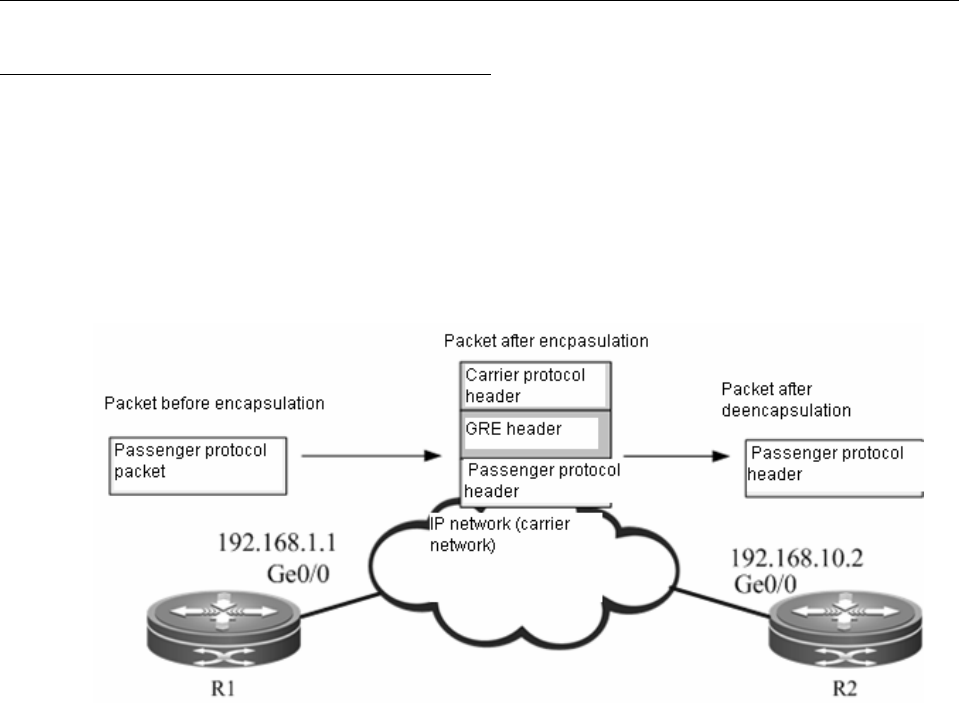
DES-7200 Configuration Guide Chapter 2 Configuring BGP IP VPN
2-54
2.3.4.1 Basic concepts
The traditional MPLS VPN uses Label Switching Path (LSP) as the public-network tunnel -- VPN
traffic flows from upstream PE to the downstream PE by means of label switching -- this will
require the carrier's core network to fully support MPLS. For certain considerations or due to
certain limitations, if the carrier's core network cannot fully support MPLS, the MPLS VPN over
GRE can provide a mechanism to allow the carrier to take GRE tunnel as a hop on the LSP
tunnel, so as to guarantee the integrity of public-network LSP.
Fig 16 GRE tunnel
GRE tunnel
GRE (Generic Routing Encapsulation) provides a mechanism to encapsulate the packets of one
protocol (passenger protocol) into another protocol (carrier protocol). The encapsulated packets
consist of: carrier protocol header, GRE header and original passenger protocol header. After
being encapsulated by the carrier protocol, the passenger protocol packets can then be
forwarded in the carrier network. After the encapsulated packets reach the destination address of
carrier protocol, the destination device will de-encapsulate the packets and then forward the
packets according to the inner-layer passenger protocol used by packets. Such an encapsulation
technology allows passenger protocol packets to cross heterogeneous carrier network and reach
the destination device. It is a tunnel encapsulation technology.
Passenger protocol
Passenger protocol is the protocol being encapsulated during the process of GRE encapsulation.
In the application scenario of MPLS VPN over GRE, the passenger protocol refers to packets
carrying MPLS labels.
Carrier protocol


















